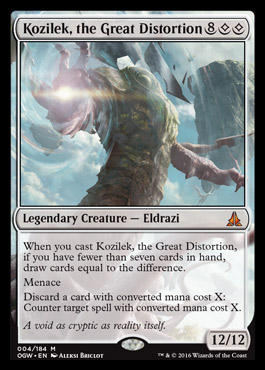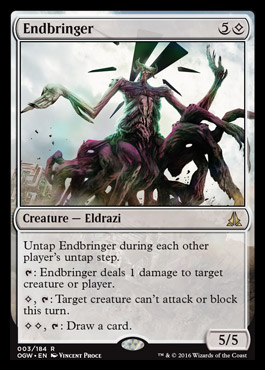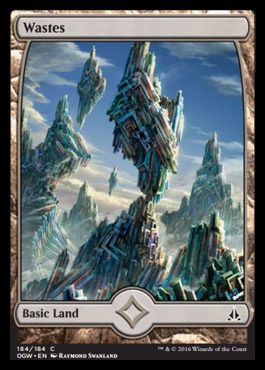Drafting the Commander Cube with other people, in a limited environment, is wildly different than using the Commander Cube to build Commander decks for myself to put up against the world.
Seems obvious, right?
Well, it is and it isn't.
Magic, as a game, leans heavily on the color pie to keep things consistent. The idea that each color does only some things well is what makes the game interesting on some level. In limited, red gets in there with quick attacks. But, if you are putting your Commander deck up against the world, the number of decks that can supporting a haste two-power one-drop is severely limited.


Krenko can do it, but probably doesn't want to.
In a limited environment, like draft or sealed, a red deck that builds around a low-curve of small creatures is practically a given. Look at just about any block and scroll through the red creatures. You will see a lot of small creatures at common or uncommon rarities, and a few big dragons at the top end. That's the deck. Swarming, speed, and burn with a big flying beater to bomb the game out if it goes long. Red can be a lot of things, but that right there is what red is at its heart.


Black can play this game too, but usually has more of a suicidal bend to it. No burn, but cards that trade life for value fill out the deck with some way to wipe the board for advantage. Black can also play a more controlling deck, which leads me to another color.


Blue has tempo plays with countering spells and bouncing permanents. It can swarm with creatures, too, but usually gets its advantage from a well-placed spell at a pivotal moment. It can play similar to black where it locks up the game with card advantage spells and then drops a big creature to close things out.


White can swarm with creatures, but things build on themselves in this color. Creatures and enchantments will make the army grow in size or abilities. White stands together and brings in a big Angel to win the day.


Green has small creatures and big creatures to fill up the board, usually with better creatures at each point in the curve than the others colors have, especially in the mid-range size.
These general descriptions do not hold when taken out of a limited environment. In the larger world of Commander games, things get really big really fast. Games often skip the first three or four turns where a normal game of Magic might have give and take. Instead, there's lots of ramping, casting incremental value cards, or landing huge spells for value.


You also have access to a predetermined deck, as opposed to something you just drafted and threw together. So, in that case, you can put together very specialized synergies. Combinations of cards that you couldn't count on drafting together are not a problem to put together in a deck that you built specifically for the purpose of putting those cards together.

It also means that commitment to a single color is almost never going to work out unless you get really lucky with the cards you pull. Cards with three or even four mana symbols of a single color become almost unplayable in a limited environment. And color-fixing is even more important so that you don't randomly lose to having a handful of the wrong spells to go with your lands.
So, if you want to draft a Commander cube in a limited environment vs. using the Commander cube to build decks for yourself against the world, the cards that go into the cube are going to be completely different.
Yeah, that makes sense.
What does that mean for the Commander Cube, then? Well, since we have been drafting it as a group, it means that most of the colors need significant changes to make that work. Games were ending in an unsatisfying way, where whoever got the ramp and bombs first ended up winning.
I started making changes, but depending on when you read this, I might not have gotten everything updated yet. You can take a look at the progress here.

So, how do you play Commander in a limited environment?
Here's how it works:
1) Deal out two of the three-color legendary creatures to each player.
Each player selects one of these two creatures to be their commander, but doesn't make the final selection until deckbuilding, later.
2) Draft three or four 15 card packs, as normal. Or, deal out six or eight 15 card packs for sealed.
3) Build 50 card decks, but follow the color identity rule like you would in a normal Commander game.
This is where you select your commander. If you ended up with a two-color or one-color legendary creature, you can use it as your commander instead of one of the three-color legendary creatures you were dealt in step 1.
4) Play a multiplayer game, but with the following changes:
*Players must have exactly 50 cards in their deck, including their Commander.
*Players start with 30 life.
*Players lose if they take 16 damage from any one Commander.
You can do free-for-all, where everyone can attack anyone, or you can use one of the variations where attacks can only be made to the left or the right. You can even duel instead of multiplayer if that's your thing. It depends on how much time you have available and how close you want it to be to a normal game of Commander.






